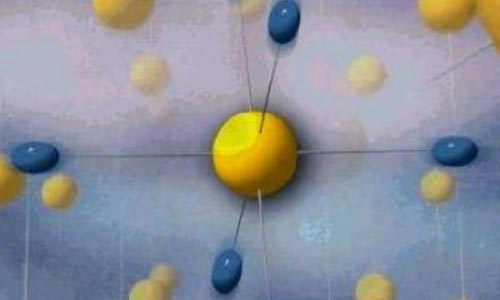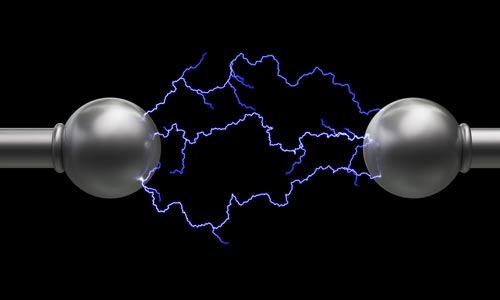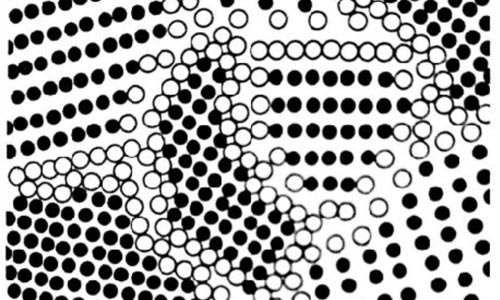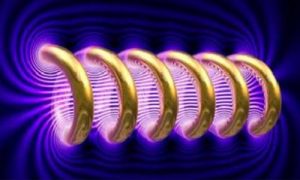Ten characteristics of ultra-fine powder
Generally speaking, we define powder with a particle size of less than 1μm as ultrafine powder. Ultrafine powder has different surface effects and volume effects from the original solid materials or coarser particles, and exhibits properties such as optics, electricity, magnetism, heat, catalysis, and mechanics.
Surface effect
The significant difference between ultrafine powder and macroscopic objects is the increase in the number of surface atoms, its large specific surface area, and the surface effect cannot be ignored.
Physically speaking, surface atoms are not the same as internal atoms, and internal atoms are subjected to the force of symmetrical surrounding atoms. The space position where the surface atoms are located is asymmetric, and it is unilaterally attracted by the atoms in the body, which means that the energy of the surface atoms is higher than that of the atoms in the body.
Quantum effect
The quantum effect refers to the phenomenon that when the particle size drops to a certain value, the electrons near the metal Fermi level change from quasi-continuous to discrete.

According to the energy band theory of solids, conduction electrons no longer belong to a single atom when moving in the periodic potential field of a crystal, but belong to the entire crystal. As a result of this publicization, the energy state of the electron in the crystal becomes quasi-continuous. Energy band, that is, the energy difference between adjacent energy levels is much smaller than thermal energy.
Optical properties
The color of metal particles is often different from that of bulk materials. When the size of the metal particles is less than a certain value, they usually appear black due to the total absorption of light waves. In addition to the absorption of light waves, ultrafine particles also have a scattering effect.
For ultrafine dispersed particles smaller than a few tenths of the wavelength of light, the intensity of scattered light is inversely proportional to the fourth power of the wavelength. Therefore, the scattering of sunlight by the dust in the atmosphere makes the clear sky blue.
The ultrafine clay solution highly dispersed in water, when viewed from the side against a dark background, appears blue-white, as if it is a bit turbid. In fact, this is the result of the ultrafine clay particles in the solution scattering part of the incident light.
Electrical properties

Metallic materials have conductivity, but the conductivity of nano-metal particles is significantly reduced. When the electric field energy is lower than the interval of the splitting energy level, the conductivity of the metal will be transformed into electrical insulation.
Magnetic properties
The magnetic properties of ultrafine powders, especially the dependence of the magnetic properties of ferromagnetic particles on the particle size, have long been a subject of interest.
For bulk magnetic materials, when in the magnetic neutral state, many magnetic domains are usually formed, and the magnetic moment in each magnetic domain will be spontaneously magnetized along the direction of its lowest energy. Between the magnetic domain and the magnetic domain, there is a transition layer whose magnetization direction changes continuously, which is called a magnetic wall.
The arrangement of the chaotic orientation of the magnetic domains actually obeys the principle of the minimum energy of the entire ferromagnet, which will cause the macroscopic magnetization to be zero in the magnetic neutral state. The orientation of the magnetic domain vector in the magnetic domain generally depends on the type of magnetic anisotropy.
Magnetic ultrafine powders are widely used. As magnetic recording media, there are γ-Fe2O3, FeCo metal , CrO2 , TixCOxO19 , BaFe12-2x,Fe4N and Co-γ-Fe2O3. As the magnetic fluid, there are various nano ferrite powders such as Fe3O4 and nano particles of iron, nickel, cobalt and their alloys. When used as a magnetic liquid, the surface of the microparticles must be wrapped with a layer of organic long-chain molecules.
Due to the small size of the nano-powder and the large specific surface area, the surface coating also has a greater influence on its magnetic properties.
Thermal properties
The change in particle size leads to a change in the specific surface area, which changes the chemical potential of the particles and changes the thermodynamic properties. The particle size has a great influence on the thermodynamic properties. As the particle size becomes smaller, the surface energy will increase significantly, so that the ultrafine powder can be melted or sintered at a temperature lower than the melting point of the bulk material.
Catalytic properties
For heterogeneous catalytic reactions, in order to improve the catalytic efficiency, increase the specific surface area of the catalyst and reduce the particle size is necessary, but not the only one.
Some catalysts tend to show the maximum value of catalytic efficiency when the particle size is appropriate. Therefore, it is necessary to study the influence of the particle size and surface state of the catalyst on the catalytic activity.
Mechanical properties
The hardness of traditional metal materials increases with the refinement of grains, and the basic mechanical properties of coarse-grained metal materials increase with the decrease of grain size.
For some pure metal nano-solids, such as palladium, copper, silver, nickel, selenium, etc., the microhardness at room temperature increases significantly compared with the corresponding coarse grains. But for nanomaterials of intermetallic compounds, when the size is below a certain critical size, as the grain size becomes smaller, the hardness decreases instead.

Atom arrangement in nanosolid
In the study of mechanical properties of nanomaterials, people are most interested in nanoceramic materials. Nano-ceramic materials have good chemical stability, high hardness, and high temperature resistance, which are expected to overcome the shortcomings of inability to be machined, brittleness, and non-ductility.
Magnetoresistive properties
The so-called magnetoresistance effect is the change in resistivity caused by a magnetic field.

Regardless of the particle film or multilayer film, in order to obtain a large magnetoresistance effect, the particle size or the thickness of the magnetic and non-magnetic layer must be less than the mean free path of electrons. In this way, in addition to spin-related scattering, electrons are transported in the process Less subject to other scattering, the orientation of the spin can remain unchanged.
Since the mean free path of electrons is usually a few nanometers to 100 nm, the giant magnetoresistance effect can only appear in nano-scale systems.
Solution properties
- Movement of ultrafine particles in solution
In a solution or suspension with ultrafine powder particles as the solute, the ultrafine particles also have a diffusion effect from a high concentration area to a low concentration area. At the same time, there is also Brownian motion.
- Adsorption of ultrafine particles in solution
Adsorption is one of the interfacial phenomena between different phases in contact with each other. It is a phenomenon in which the adsorbate is adsorbed in the very thin contact layer on the interface or surface of the adsorbent liquid or solid. Ultrafine particles have large specific surface area, high surface energy and large adsorption capacity.
- Rheology
Rheology is the science of studying the flow and behavior of matter. As discussed above, as the particle size becomes smaller, the particles gradually exhibit properties or behaviors different from those of the original solid. The rheology of the so-called particle dispersion system or colloid in which particles below 1 μm are dispersed in a liquid is a very meaningful research object in theory and in practice.
Article source: China Powder Network
